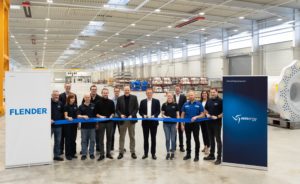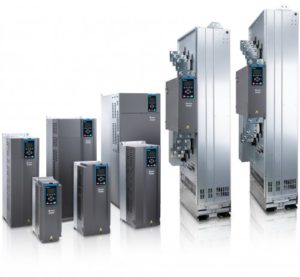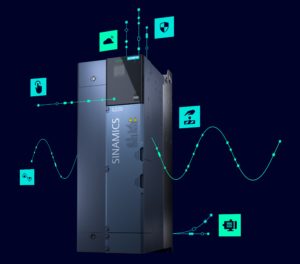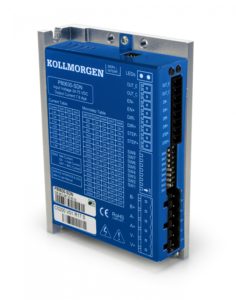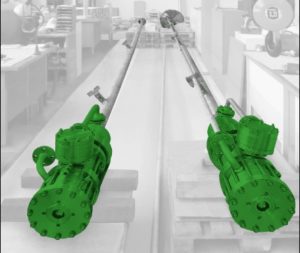ABB delivers strong order growth and cash in Q2
ABB reported strong order growth, stable revenues and a significant increase in cash from operations for the second quarter of 2014. The lower operational EBITDA margin mainly reflects ongoing project-related challenges in the Power Systems (PS) division.
Orders of $10.6 billion were 14 percent higher (13 percent on a like-for-like basis2) compared with the same quarter in 2013. Base orders accelerated and large orders grew more than 70 percent. The positive growth momentum was supported across all regions.
“Last October we said that we will drive organic growth through penetration, innovation and expansion and now we are delivering results,” said ABB Chief Executive Officer Ulrich Spiesshofer. “Our focused actions are paying off and support overall increased order momentum. In the second quarter we saw encouraging growth in our two largest markets, the US and China.”
The strong order intake resulted in a positive book-to-bill ratio of 1.04x. ABB delivered steady revenues of $10.2 billion despite the lower opening order backlog.
Group operational EBITDA was impacted by a loss in the PS division related to ongoing project charges in large engineering, procurement and construction (EPC) projects for offshore wind and solar power generation. New management has taken strict actions to de-risk the PS portfolio and adjust capacity. In addition to the exit from the solar EPC business, ABB is implementing a new business model for offshore wind EPC. “As said previously, PS is likely to weigh on earnings in the coming quarters. Spiesshofer said. “We are driving the PS turnaround as a top priority and made good progress in lowering the exposure.”
Operational EBITDA margin was stable to higher for the remaining divisions, excluding the expected dilutive impact of the Power-One acquisition in Discrete Automation and Motion. Cash from operations improved by more than 60 percent to $888 million in the quarter.
ABB successfully executed on its announced strategic portfolio pruning of businesses that have limited synergies with the rest of the portfolio. “Since October last year, we have moved quickly on our commitment to optimize the portfolio in a value-creating way and to strengthen the focus on the core,” Spiesshofer said.
“For the second half of the year we will continue to push hard on our organic growth initiatives in a mixed market environment,” he said. “We will drive our relentless execution on cash and further step up the momentum on cost savings. We are confident that our balanced growth and execution initiatives will yield positive results for our shareholders.”
ABB will host a capital markets day on September 9 in London to communicate its new strategy and financial targets as well as priorities for value creation and capital allocation.
Summary of Q2 results
Growth overview
Demand for power distribution systems and equipment from utility customers remained steady in the quarter while utility investments in power transmission remained selective. Industrial demand varied by region and end market, with positive trends in sectors such as oil and gas and general industry and continued weakness in mining. Infrastructure markets were also mixed. Construction markets were mainly flat to slightly weaker while rail and marine transportation demand was positive.
Total orders received were up 14 percent in the quarter (13 percent on a like-for-like basis). Approximately half of the increase resulted from higher large orders (above $15 million), particularly the $400-million HVDC (high-voltage direct current) power link order won in Canada. Base orders (below $15 million) were up 9 percent (7 percent like-for-like) on growth in most of ABB’s early-cycle product businesses. Large orders represented 14 percent of total orders received in the quarter, compared to 9 percent in the same quarter in 2013.
Service orders increased 12 percent and represented 17 percent of total orders, unchanged versus the year-earlier quarter.
Revenues were flat in the second quarter (down 1 percent like-for-like). Higher revenues in the Discrete Automation and Motion division compensated a revenue decline in Process Automation and Power Systems divisions where opening order backlogs were lower compared to the same quarter a year earlier. Service revenues were flat and represented 16 percent of total revenues, unchanged compared to the same quarter a year earlier.
The order backlog at the end of June amounted to $27.1 billion, a decrease of 5 percent compared to the end of the same quarter in 2013 but 5 percent higher than at the end of 2013.
Orders received and revenues by region
Orders were mixed across Europe. For example, orders increased in Russia, the Netherlands and Germany and declined in Norway, the UK and France.
The strong order development in the Americas partly reflects the large power transmission order won in Canada in the quarter, as well as a double-digit order increase in the US and a significant increase in Brazil compared with the low levels of 2013.
Asian order growth was led by double-digit increases in China—especially in Power Products and Discrete Automation and Motion—Indonesia, and South Korea. Orders decreased in India.
Orders increased in the Middle East and Africa—including strong double-digit growth in Saudi Arabia—mainly on higher demand in the power divisions.
Orders received and revenues by division
Discrete Automation and Motion: A combination of growth initiatives and higher demand in early-cycle businesses serving general industry and discrete manufacturing drove order growth in the quarter, led by a solid increase in base orders. Large orders were lower. Increased revenues in robotics and service more than offset the impact of a lower opening order backlog in large motors and medium-voltage drives compared to the same quarter in 2013.
Low Voltage Products: Orders were stable compared with the same period a year earlier and, excluding the previously-announced divestments, the remaining ongoing business improved. Revenue growth was driven mainly by product businesses and systems.
Process Automation: Both large and base orders improved in the second quarter, driven mainly by the strength of the marine and pulp and paper sectors. Demand from the mining industry was up but remained at low levels. Orders grew in the Americas and Asia. Orders were flat in Europe and down slightly in the Middle East and Africa. Revenues were lower as the execution of the strong order backlog in oil and gas was offset mainly by a decline in marine and mining revenues. Increased lifecycle service revenues in the quarter were offset by lower full service revenues.
Power Products: Both large and base orders increased in the second quarter, supported by the distribution and industry sectors and continued selective investments on large transmission projects. Order growth was driven by emerging markets, including China, India and Brazil. Orders also increased in North America but were lower in Europe. The lower revenues in the quarter mainly reflect the lower opening order backlog.
Power Systems: An increase in large orders, mainly the $400-million HVDC (high-voltage direct current) link project in Canada, drove the strong order improvement in the second quarter, although base orders also grew at a double-digit pace. Utilities remain cautious in their power transmission investments and ABB continues to be selective, focusing on margin and pull-through. Revenues were lower than the previous year impacted by the lower opening order backlog and the execution delays in selected projects.
Earnings overview
Operational EBITDA
Operational EBITDA in the second quarter of 2014 amounted to $1.3 billion, 15 percent below the year-earlier period, primarily the result of the continued weak operational performance in Power Systems, mainly related to EPC projects in offshore wind and solar power generation. The operational EBITDA margin was steady to higher in all other divisions (excluding the dilutive impact of the Power-One acquisition in the Discrete Automation and Motion division).
Cost savings and further productivity improvements more than compensated pricing pressures.
Net income
Net income for the quarter amounted to $636 million and included $333 million of depreciation and amortization, of which approximately $100 million of amortization was related to acquisitions. Restructuring-related charges amounted to $40 million.
Net income also includes after-tax gains of approximately $60 million from divestitures in the quarter.
Basic earnings per share amounted to $0.28 in the second quarter compared to $0.33 in the same quarter a year earlier.
Earnings and cash flows by division
Discrete Automation and Motion: The operational EBITDA increased on higher revenues while the operational EBITDA margin decline reflects the dilutive impact from Power-One, acquired in the third quarter of 2013. Excluding that impact, the division’s operational EBITDA margin was slightly higher than in the year-earlier period.
Low Voltage Products: Operational EBITDA margin declined due to an unfavorable revenue mix and increased investments to drive organic sales growth.
Process Automation: The operational EBITDA margin improvement reflects solid project execution out of the order backlog in the oil and gas business and continued strict cost control.
Power Products: The operational EBITDA margin was maintained at a steady level as a result of continued cost savings and solid execution.
Power Systems: The operational EBITDA loss reflects the continued impact of project-related charges, mainly in engineering, procurement and construction (EPC) contracts in solar power generation and in offshore wind. Lower revenues also affected earnings.
Balance sheet and cash flow
Total debt at the end of the second quarter amounted to around $9 billion, approximately $1 billion higher than at the end of 2013, reflecting increased short-term borrowing. Net debt2 at the end of the second quarter increased to approximately $3 billion compared with $1.5 billion at the end of 2013.
ABB reported cash flow from operations of $888 million in the second quarter, an increase of more than $300 million compared with the second quarter in 2013. Cash flow from the divisions improved by $280 million as the result of successful net working capital management efforts, especially in receivables and inventory management. Net working capital as a share of revenues2 amounted to 17 percent, as in the second quarter of 2013.
Divestitures
In line with its strategy to continuously optimize the portfolio and to focus on driving profitable growth in the core automation and power businesses, ABB announced in June an agreement to divest Thomas & Betts’ steel structures business for $600 million in an all-cash transaction. The deal is expected to be closed in the third quarter of 2014, subject to regulatory clearances. ABB also divested the Power Solutions business of Power-One for approximately $120 million and completed the previously-announced sale of Thomas & Betts’ heating, ventilation and air conditioning business for approximately $260 million.
Outlook
The long-term demand outlook for ABB’s businesses remains clearly positive. The need for efficient and reliable electricity transmission and distribution will continue to increase, driven by factors such as: accelerating urbanization in emerging markets; actions to address global warming; the rapidly increasing power needs from digitization; and the refurbishment of aging power grids. At the same time, demand for industrial automation solutions will grow as customers strive to improve productivity, efficiency, product quality, and safety. ABB is well positioned to tap these opportunities for long-term profitable growth with its strong market presence, broad geographic and business scope, technology leadership and financial strength.
In the short term, there are positive early-cycle macroeconomic signs, for example, in the US. However, there remain uncertainties related to the speed and strength of economic development in some emerging markets. Growth in Europe is expected to continue the pattern seen in the second quarter and to vary by country and sector.
In this market environment, ABB’s management team aims to systematically drive profitable organic growth through increased market penetration, generating more revenues from our pipeline of new product innovations, and expanding into new attractive market segments. In addition, management intends to accelerate business-led collaboration, such as further developing the service business, driving the successful integration of acquired businesses and increasing ABB’s productivity by focusing stronger on the needs of customers. A third priority is relentless execution, especially in the areas of cost savings, cash flow generation and returning the Power Systems division to higher and more consistent returns.
Source: ABB Group

